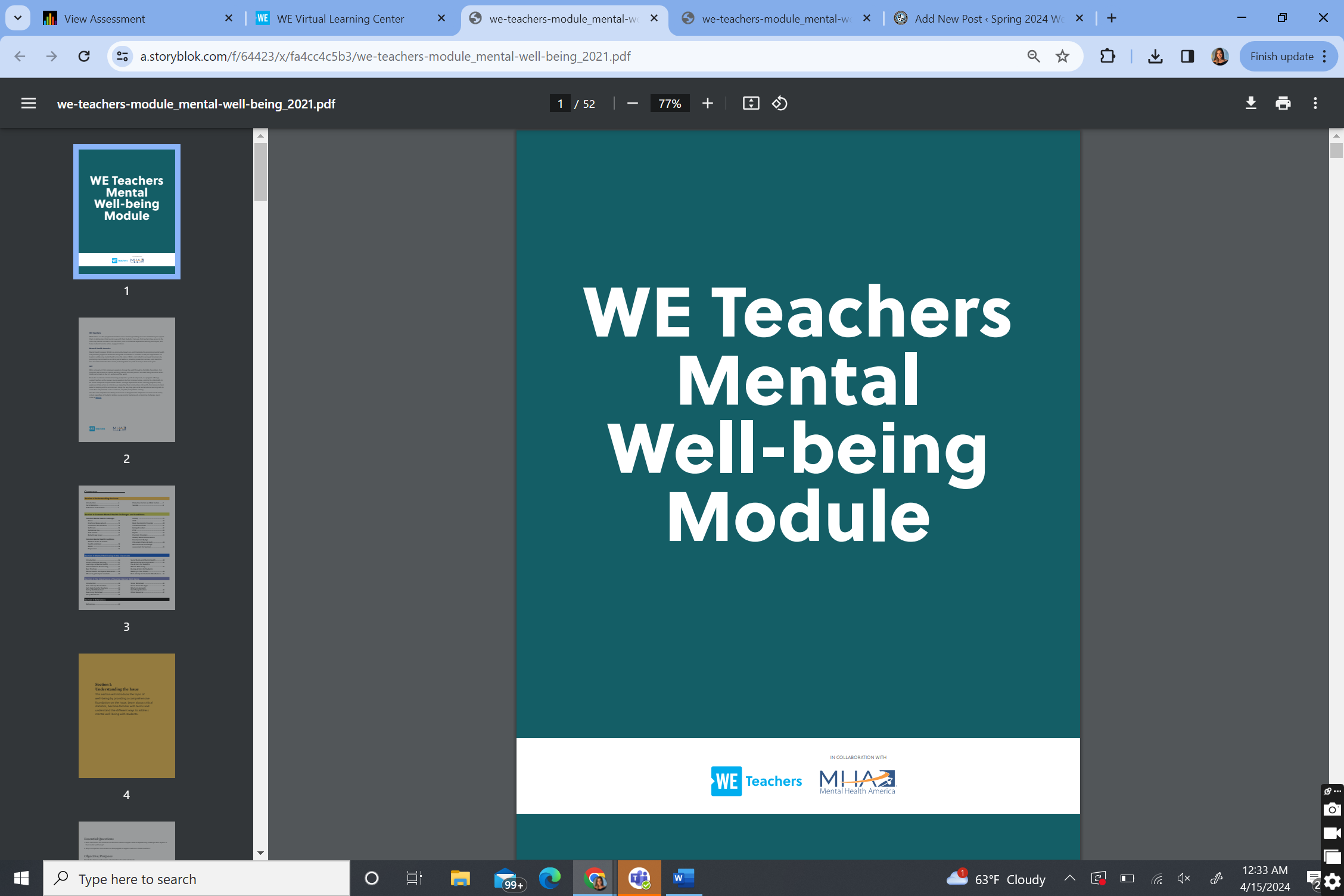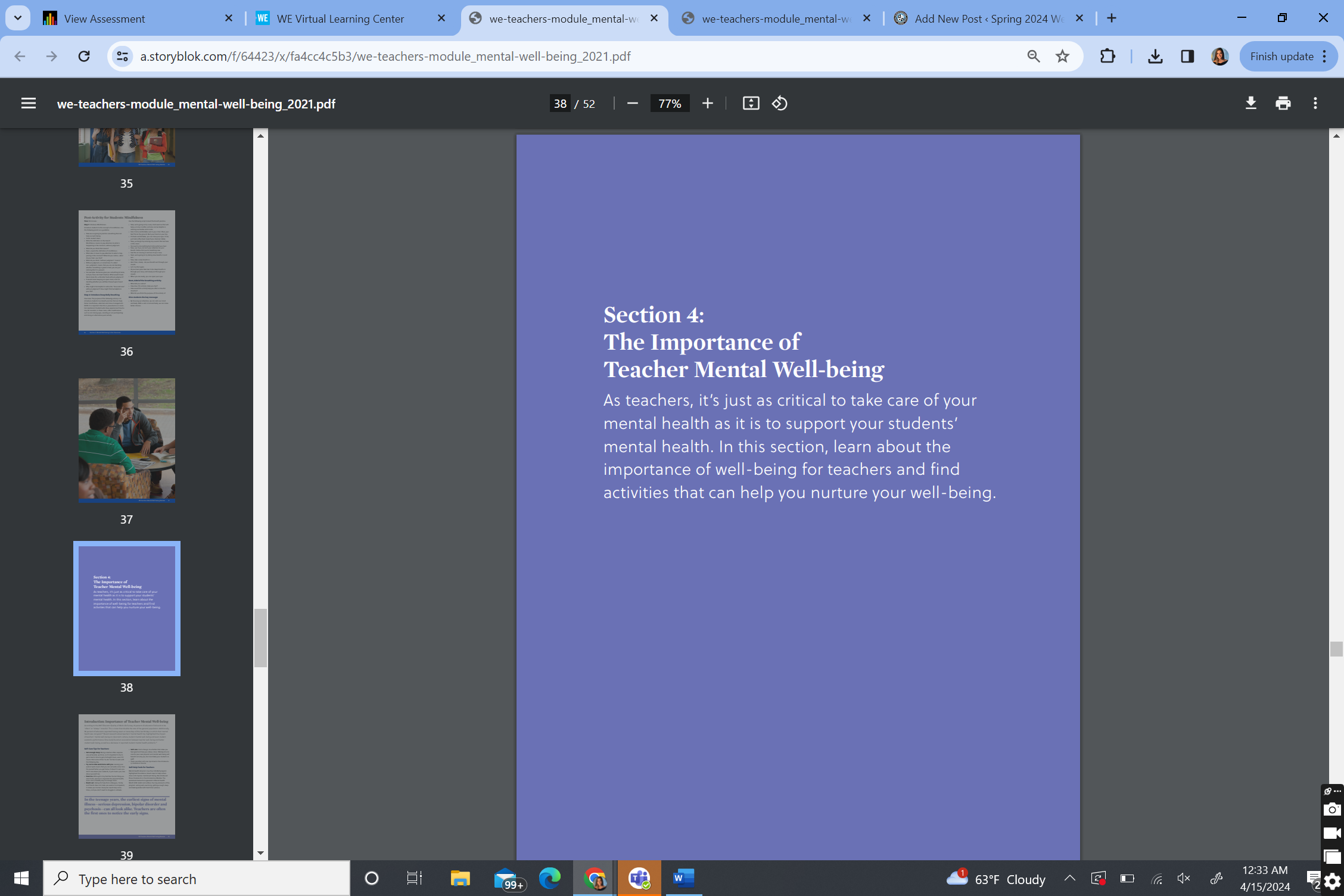There is certainly a heightened focus on mental well-being in schools today than there used to be. When I was in school grades K-8 mental health issues among students were not acknowledged the way they are now. Today, we know much more about their impact on academic performance. Recognizing its crucial role in student success and overall quality of life, schools are increasingly integrating mental well-being into their curriculum and support systems. In my future classroom, this is an area I really want to continue to put an emphasis on. I want to give my future students the support I wish I had as a child in school.


Understanding and building knowledge about mental health issues in youth is crucial for several reasons. Most mental health problems often emerge during adolescence, and early intervention can prevent long-term consequences. It is important for all people to know that mental health affects various aspects of a young person’s life, including academic performance, relationships, and overall well-being. By increasing awareness and knowledge, we can reduce stigma, promote help-seeking behaviors, and provide appropriate support and resources to those in need. Understanding and addressing mental health in youth fosters resilience and equips them with coping skills to navigate life’s challenges effectively.

Section two in this unit discusses common mental health challenges amongst students. Some common mental health challenges in youth include anxiety disorders, depression, ADHD, eating disorders, substance abuse, self-harm, suicidal behavior, and mood disorders like bipolar disorder. These issues can significantly impact a young person’s emotional well-being, academic performance, and social relationships. Early recognition and intervention are crucial to prevent long-term consequences and promote healthy development. By addressing these challenges through education, awareness, and access to mental health resources, we can better support the needs of youth and foster resilience, ultimately ensuring their overall well-being and future success.

Supporting children struggling with mental health in the classroom involves creating a safe, supportive environment where emotional regulation is promoted through coping strategies and regular brain breaks. Providing individualized support, encouraging peer empathy, and normalizing mental health discussions are essential. Implementing sensory supports, establishing predictable routines, and collaborating with mental health professionals further bolster student well-being. By modeling healthy coping behaviors and prioritizing student support, educators foster an environment where all students can thrive academically and emotionally.

The last section of this unit covers the importance of a teacher’s mental well-being. It’s vital for teachers to be in a good mental state as it directly impacts their effectiveness in the classroom and their ability to support students. To maintain their mental well-being, teachers can prioritize self-care through activities like exercise and hobbies, establish clear boundaries between work and personal life, and seek support from colleagues and loved ones. Engaging in mindfulness practices, attending to emotional needs, and taking regular breaks also contribute to their overall well-being. By prioritizing their mental health, teachers can create a positive learning environment and serve as positive role models for their students.